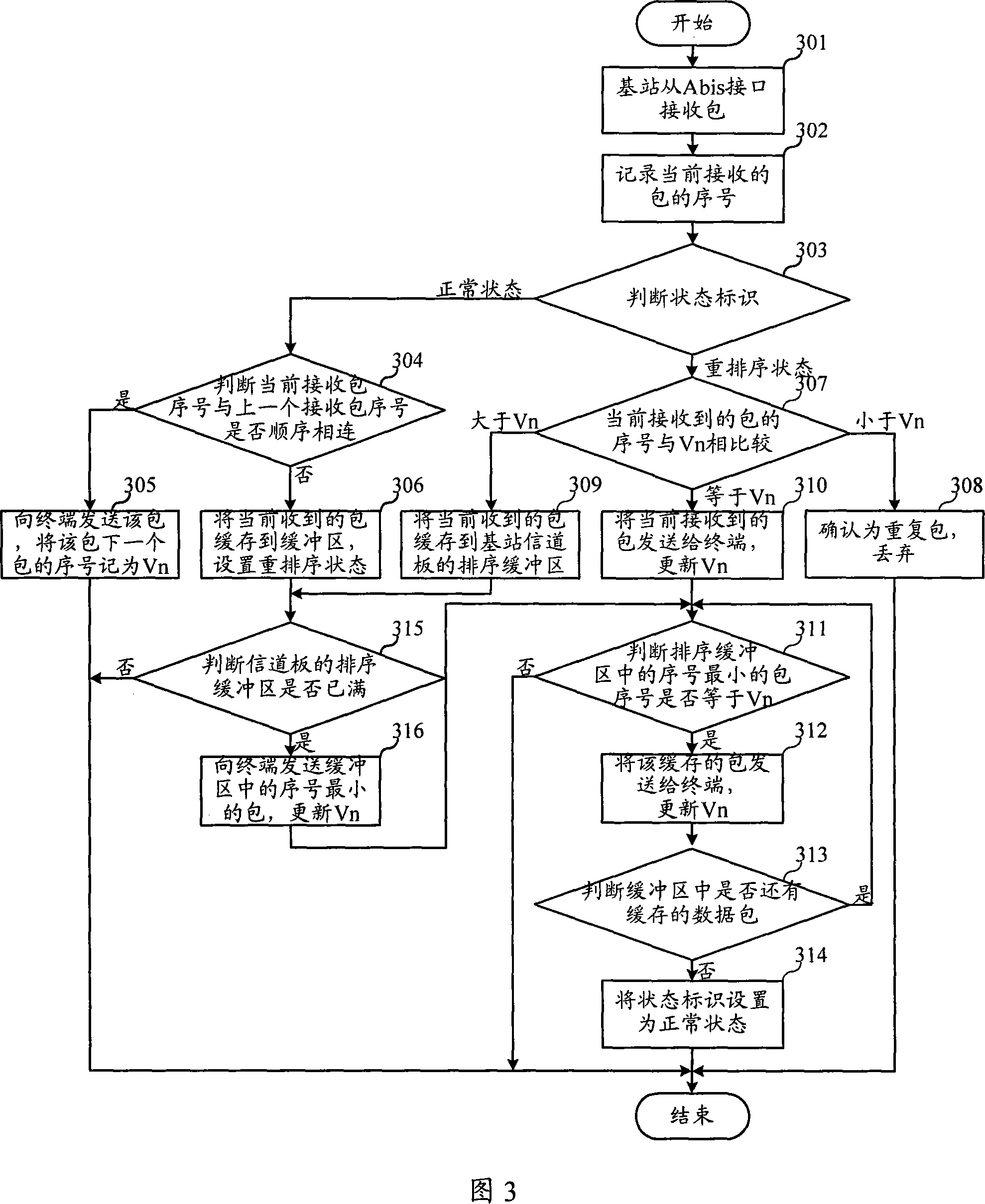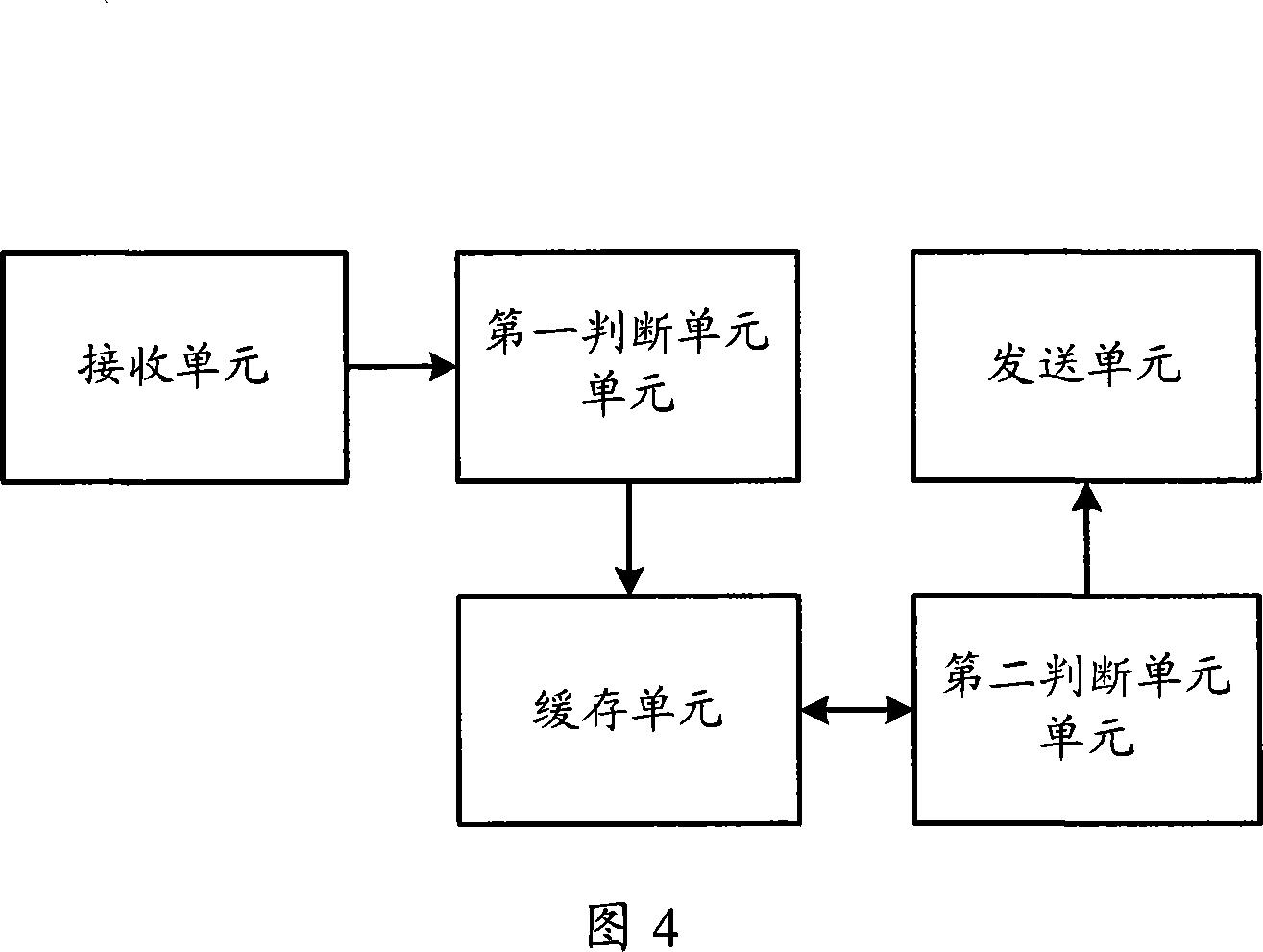Packet transmission method and base station device
A base station equipment and packet transmission technology, applied in the field of packet transmission technology, can solve problems such as bandwidth waste, achieve the effect of improving bandwidth utilization and solving the effect of increasing retransmissions
- Summary
- Abstract
- Description
- Claims
- Application Information
AI Technical Summary
Problems solved by technology
Method used
Image
Examples
Embodiment Construction
[0032] In order to make the purpose, technical solution and advantages of the present invention clearer, the following will further describe the implementation of the present invention in detail in conjunction with the accompanying drawings.
[0033] A first embodiment of the present invention relates to a packet transmission method. In this embodiment, a sorting buffer is set in the base station, for example, the buffer can be set on a channel board of the base station. After the base station receives the packet from the Abis interface, if the packet currently received by the base station is not the currently expected packet, it buffers the packet currently received by the base station to the buffer; if there is a currently expected packet in the buffer, it sends the currently expected packet. The specific process is shown in Figure 2.
[0034] In step 210 of Figure 2, the base station receives the packet.
[0035] In step 220 of FIG. 2 , the base station judges whether the...
PUM
 Login to View More
Login to View More Abstract
Description
Claims
Application Information
 Login to View More
Login to View More - Generate Ideas
- Intellectual Property
- Life Sciences
- Materials
- Tech Scout
- Unparalleled Data Quality
- Higher Quality Content
- 60% Fewer Hallucinations
Browse by: Latest US Patents, China's latest patents, Technical Efficacy Thesaurus, Application Domain, Technology Topic, Popular Technical Reports.
© 2025 PatSnap. All rights reserved.Legal|Privacy policy|Modern Slavery Act Transparency Statement|Sitemap|About US| Contact US: help@patsnap.com



